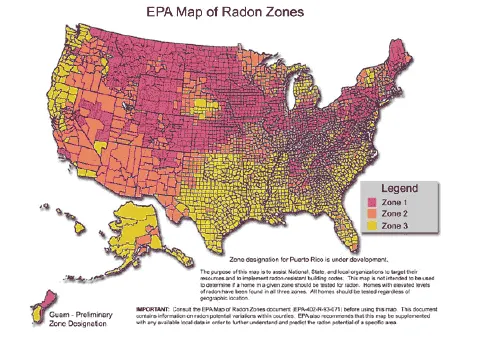Many people are surprised to hear that the second most frequent cause of lung cancer in the United States actually comes from something completely natural. It is not from car exhaust, smog, or second hand smoke. The culprit is Radon-222, a naturally occurring radioactive isotope of Radon. As the title suggests, it exists naturally in a gaseous state and is undetectable by smell or sight.
In recent years, homes and office buildings have become increasingly better sealed and insulated in order to reduce air conditioning and heating costs. While this is of course completely logical from an economic standpoint, there are many unforeseen side effects that may result from these precautions. One of those potential issues is indoor air quality, which is a major problem in the developed world. What happens when particulate matter, carcinogens, or Radon flow into a space, but can't easily escape? They become trapped and propagate through the building, and over time become potentially lethal irritants to our lungs.
Radon can seep through cracks in and around homes, causing damage to lung tissue for anyone unfortunate enough to live in close proximity to the gas. While Radon-222 has a half life of only 4 days, its daughter product can attach to dust particles and be readily inhaled. This may seem like a fringe issue, but it is estimated that 1 in 15 homes have elevated levels of Radon. The EPA also recommends tests twice a year to ensure that levels are kept below the maximum allowable concentration.

Hope everyone enjoyed today's article! If you learned something, feel free to leave a comment or an upvote. See you next time!